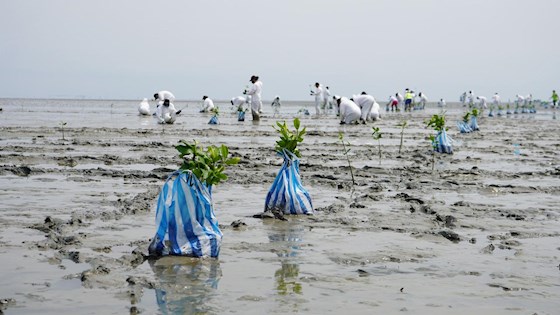-
- Global
- Algeria, Djazair
- Angola
- Argentina
- Australia
- Belgium
- Brazil
- Chile
- China
- Cyprus
- Dominicana
- Ecuador
- Egypt
- EU Intermodal
- Hong Kong
- India
- Indonesia
- Malaysia
- Mozambique
- New Zealand
- Pakistan
- Peru
- Philippines
- Romania
- Rwanda
- Saudi Arabia
- Senegal
- Serbia
- Singapore
- Somaliland
- South Korea
- Spain
- Suriname
- Thailand
- Turkiye
- United Arab Emirates
- Ukraine
- United Kingdom
- Vietnam
-
Menu
-
SOLUTIONS
Related content
![relatedcontent]()
Data Fills The Gaps In Modern Supply Chains
Global supply chains are no strangers to disruption, whether caused by trade disputes, geopolitics or the unpredictable forces of climate change. Amidst these challenges, an often-overlooked vulnerability lies in supply chain data gaps.
Read more![relatedcontent]()
Rail Networks Transform Supply Chains
Rail freight has the potential to revolutionise supply chains in both developed and developing nations, providing a key role in promoting sustainability and economic growth.
Read more -
INDUSTRIES
Related content
![relatedcontent]()
Making Healthcare Equity Reality
Healthy societies transform economies, yet the pandemics of the past few years have demonstrated that healthcare logistics is a complex beast and unique to that of any other sector.
Read more![relatedcontent]()
The Future Of EVs Is In Our Supply Chains
Electric vehicles (EVs) are proving to be the most popular replacement for fossil fuel cars. So much so that by 2030 electric vehicles will represent over 60% of vehicles sold globally.
Read more -
INSIGHTS
Related content
![relatedcontent]()
Our Stories
We connect people, markets and nations to change what's possible for everyone.
Read More -
SUSTAINABILITY
Related content
![relatedcontent]()
Changing the perception of water
Water is crucial for life on Earth and vital for our well-being. Businesses, including ours, can play a significant role in changing how water is used.
Read more![relatedcontent]()
Climate proofing the supply chain
We examine three climate scenarios, assessing the potential impact of weather hazards across 50 ports and terminals in our global portfolio.
Read more
- SOLUTIONS nav
- INDUSTRIES nav
- INSIGHTS nav
- SUSTAINABILITY nav
The Power and Potential of Mangroves
Date: 09/01/2023
Puná Island sits off the coast of Ecuador and is characterised by extensive mangrove estuaries and a seasonally dry tropical forest. To combat this issue, in 2017 DP World Posorja began a project to cover a further 105 hectares of Puna with a new mangrove plantation that would protect the biodiversity of the island.
The destruction of mangrove ecosystems on tropical and subtropical coastlines in South America is increasing drastically. According to research by the Natural Environment Research Council, more than a quarter of the mangrove wetlands and nearly 75 percent of the salt flats on Puná have disappeared over the last 40 years.
The consequences are significant. Studies indicate that mangroves can capture four times more carbon than rainforests, and whilst mangroves make up less than one percent of all land-based forests around the world, they have a critical role in preventing carbon from entering the atmosphere.
Mangroves also form the foundation of highly productive and biologically rich ecosystems; providing a home, nursery, and feeding ground for a wide range of species of fish, birds, insects, and reptiles.
Amid rising sea levels, a mangrove forest plays a critical role in protecting coastal lands by acting as an environmental buffer against this threat – even when the area is subjected to potential sea level rises of up to 0.5mm per year.
“Sowing Life”
In 2017, DP World Posorja took a stand, partnering with the CALISUR Foundation to re-populate 105 hectares of wetlands in a bid to stabilise coastal lands against erosion and protect the environment against hurricanes.
The “Sembrando Vida” programme, which means “Sowing Life”, began in 2017 when DP World staff, volunteers, and local communities of Posorja, El Morro, and Puná Island planted over 175,000 mangrove seedlings.
A further 43,000 red mangrove seedlings have been planted since then, with plans to sow a further 32,000 by 2024.

“We are so proud of this project in Ecuador, because little is known about the power and potential of mangroves, but in a short space of time DP World, the CALISUR Foundation and the Puna Island local community have come together to have a tangible and measurable impact on the local marine environment – and but also contribute to the mitigation of global climate change.”
- Carlos Merino, CEO of DP World, Ecuador
In total, DP World Posorja will have planted enough new mangroves to help capture over three million tonnes of carbon from the atmosphere. That is the equivalent of what 950 wind turbines running for a year can save - or the equivalent of what a car driving 7 billion miles gives out!
This critical work that protects the marine environment is also future-proofing the local fishing community, since mangroves provide a nursery-like habitat for marine life, including commercial fish and crustaceans.
We use cookies on this site to enhance your user experience. By continuing to visit this site you agree to our use of cookies. Learn More








